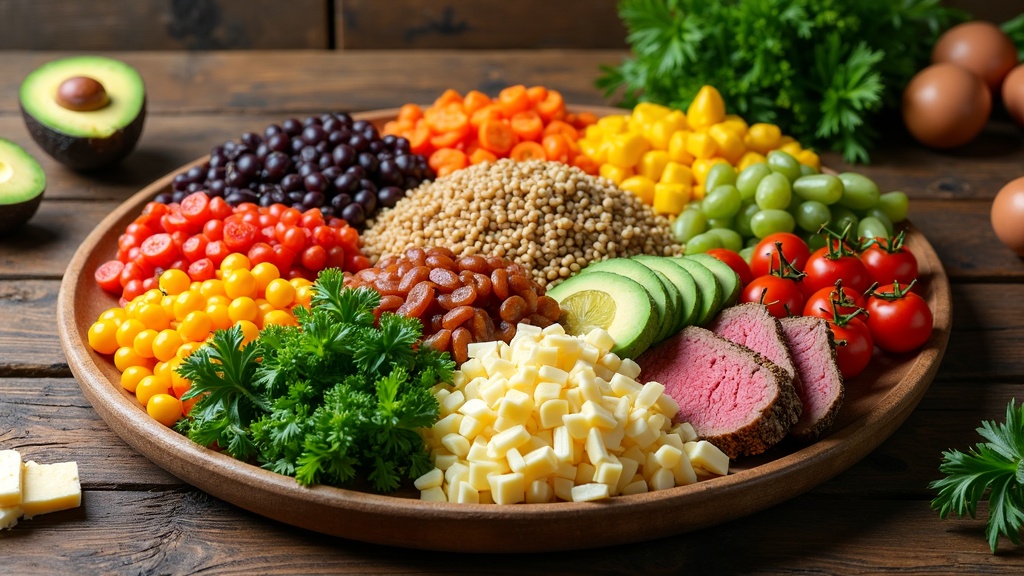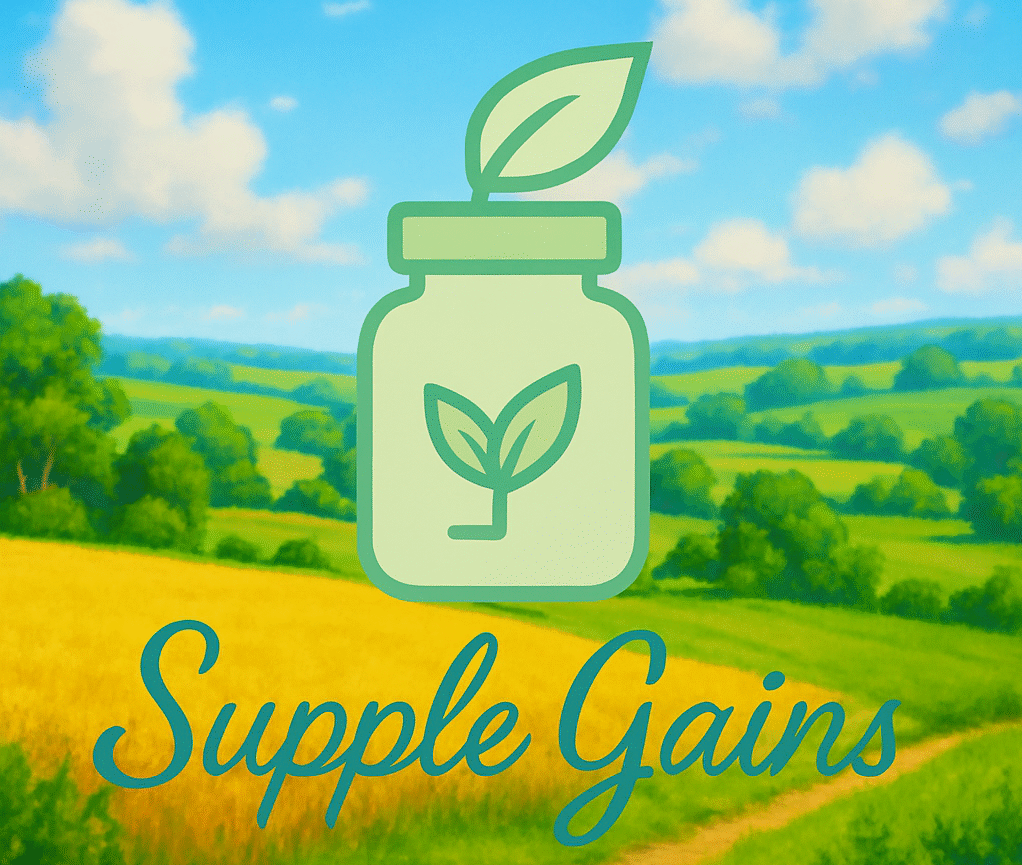If you’re interested in eating more sustainably or are simply curious about the big conversation swirling around plantbased foods, you’re definitely not alone.
Dietary choices directly affect the planet, and people everywhere are thinking through plantbased diets compared to more conventional eating habits.
I’m going to break down what each means, what science says about their impact, and how you can make food choices that are good for you and don’t place too much pressure on the environment.

Sustainable Food Choices: Why They Matter
When talking about sustainable food, it’s all about looking beyond what’s right in front of you and asking how it was grown, raised, and brought to your table.
Food production is a key player in climate change, using up resources like water and land.
The United Nations points out that what we eat and how we produce it touches everything from biodiversity and air quality to water supplies.
The way food is produced also shapes farming communities, animal treatment, and the nutrition of every bite.
This is why more folks are paying attention to whether they’re picking plantbased options, grassfed beef, or factoryfarmed chicken.
Making better choices isn’t just following a trend, it’s about looking after your health and the world around you.
PlantBased Diets Explained
Eating plantbased means focusing your meals around foods that come from the plant world; think veggies, fruits, grains, nuts, seeds, and legumes.
It doesn’t always mean giving up meat or dairy for good—some people go “mostly” plantbased, while others stick with vegan or vegetarian approaches.
Choosing more plantbased foods is linked to a lower environmental impact.
Research from Nature Sustainability makes it clear: growing plants generally requires less land, water, and creates fewer greenhouse gas emissions than raising animals.
Here’s why plantbased diets stand out for those wanting to cut their environmental impact:
- Low Carbon Footprint: Plants usually need less energy to grow than the work it takes to raise animals for meat.
- Water Savings: Beans and grains often use much less water compared to producing a burger or steak.
- Biodiversity Upside: Keeping things plantbased tends to encourage different crops in bigger variety, fighting back against the monocultures you find in meat production.
Besides, eating plantbased opens up a world of flavors—think spicy bean chilis, nutty salads, and hearty lentil soups.
More people than ever are jumping in to try these options, drawn in by the environmental argument and the health benefits.
Understanding Conventional Diets
Conventional diets often include a mix of animal products—meat, dairy, eggs—alongside plantbased foods.
These diets are common across different cultures, with meat as the big star, especially in Western countries.
The cold, hard truth is that raising livestock uses up lots of land, water, and energy.
It also brings higher levels of greenhouse gas emissions and pollution.
The Food and Agriculture Organization points to livestock production as a huge source of methane, a greenhouse gas that packs a real punch in warming the planet.
- Larger Resource Use: Animal products take up more resources per calorie when you stack them up against plantbased foods.
- Land Problems: Livestock grazing and growing their feed can lead to deforestation and wornout soil.
- Wildlife Loss: Turning forests or grasslands into pastures means less room for local animals and plants.
Conventional food systems aren’t all bad—they provide important nutrients and jobs for millions.
But the tradeoff is a heavier environmental load, particularly when diets focus heavily on animal protein.
PlantBased vs. Conventional: What’s on Your Plate?
The main differences between these two diets are bigger than what ends up on your fork.
Here’s a quick way to split the two:
- PlantBased Diets: Most calories come from plants, with animal foods left out or eaten only now and then.
- Conventional Diets: Meals focus on animal protein, with processed and whole foods like cheese, eggs, and a main meat serving.
Just swapping out one or two animalbased meals every week makes a difference.
This small step helps cut demand for land, water, and energy, making your food footprint lighter—even if you’re not ready to say goodbye to animal foods entirely.
Common Challenges and TradeOffs
No getting around it, both plantbased and conventional eating styles have their own benefits and headaches.
If you’re curious about getting into plantbased eating but hit a snag, check out what I’ve noticed in my own life:
- Access and Price: Plantbased foods can be hard to find or pricey depending on your area. Dried beans and grains are pretty cheap, but plantbased “meats” or alternative dairy can ramp up your grocery bill.
- Nutrition Planning: It takes a game plan to get enough protein, iron, and B12 with plant foods alone. Conventional diets are typically rich in these nutrients, but heavy amounts of red or processed meat aren’t always the best for you.
- Cultural Roots: For many, treasured family recipes are built around animal foods. Switching things up can mean reworking favorites, which isn’t always simple.
I found that trying new recipes or swapping in replacement foods helped a lot.
Black beans for beef in chili, oatmilk for dairy in baking—it all adds up. Being open to mixing things up lets you find a happy balance.
An Inside Look: How I’ve Switched Up My Plate
At first, I started by swapping out animal products just for lunch.
Chickpeas replaced chicken in salads, and it tasted great.
Playing with different crunchy nuts or tofu in stir fry made plantbased meals genuinely delicious.
The experiment kept things interesting and lowered the pressure to get things “just right.”
Small changes add up, and embracing them made the process easy to stick with.
Tips for Making More Sustainable Choices
Feeling a little lost? You don’t have to flip your diet upside down on day one.
These ideas help you get going and stay motivated:
- Try One PlantBased Meal Daily: Kick things off at breakfast—oatmeal with fruit and seeds is an easy win.
- Shop Seasonal and Local: Produce picked closer to home uses less gas in transit, and usually tastes better.
- Reduce Food Waste: Take leftovers and build new dishes, while only buying what you need before it spoils.
- Opt for Ethical Animal Products: Labels like pastureraised or grassfed can signal smallerfootprint choices.
- Batch Cook Ahead: Prepping meals in advance keeps things convenient and budgetfriendly during the week.
Switching out some meat and dairy for more grains, legumes, and vegetables can give your meals a boost and ease your overall impact.
Tons of apps and websites now help you find new recipes, or measure the results if you want to see real numbers.
RealWorld Applications of PlantBased and Conventional Diets
Seeing how other folks put these ideas in play can help spark your next meal or grocery haul:
- Meal Planning: Even meat eaters might do “meatless Monday” or pick veggiefocused dinners once or twice a week.
- Community Moves: More schools, companies, and care homes are dishing up plantbased meals; that sort of switch up supports local farms and trims emissions.
- Global Changes: Some countries like Denmark and Germany are going for policies that cut back on meat and boost plantbased options, even offering incentive programs to producers.
In my own neighborhood, I subscribed to a veggie box that comes from local growers.
Getting slightly oddlooking but delicious produce means less food gets tossed, and I’m supporting farmers close to home.
It’s an easy step and every meal still tastes great.
Frequently Asked Questions
Question: Is it possible to get enough protein on a plantbased diet?
Answer:
Totally. Foods like beans, lentils, tofu, tempeh, nuts, and whole grains are all packed with protein.
Eating a variety across your meals helps cover your needs.
Question: Do plantbased alternatives have the same environmental impact as whole foods?
Answer:
Alternative “meats” and cheeses go through more processing and come with more packaging, but they’re still usually ahead of their animalbased counterparts when it comes to impact.
Whole foods—beans, grains, veggies—are the real MVPs for a light footprint.
Question: Are sustainable diets always more expensive?
Answer:
No way. If you keep it simple with pantry basics like rice, beans, oats, and inseason produce, costs can be lower.
You only pay more if you stock up on specialty vegan items, which aren’t necessary for eating sustainably.
Wrapping Up
Making sustainable food choices is about working with what fits your life, what you enjoy, and what’s available.
Bringing in more plantbased foods lets you eat for the planet’s sake without sacrificing taste or convenience.
Even a few small changes—like swapping out a chicken stir fry for a chickpea curry—add up fast.
I’ve enjoyed searching out new recipes, narrowing my shopping cart to mostly plant foods, and tracking how my daily meals make a difference over time.
If you want to try making your diet more sustainable, start small; focus on what feels good, and build on your wins.
Every meal matters in the bigger picture, and your choices really do add up.
